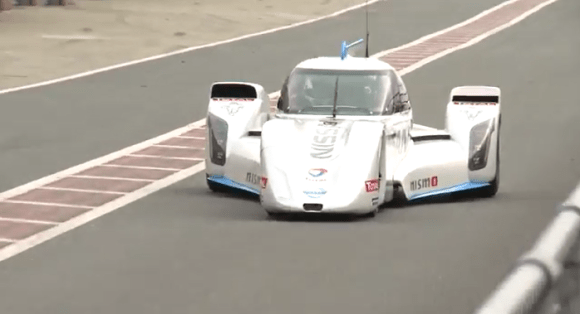
Most if the time, video games and sports cars are two of the more trivial things in life. That said, sometimes it’s those non-productive luxuries that give us the recharge we need to be industrious in our daily grind. Some people draw energy and inspiration from an afternoon spent with a good book or favorite album, others get it from a few hours working a PS4 controller or rowing through a crisp-shifting gearbox.
Competitive gaming and motorsports are getting another boost in legitimacy this summer, as the first has led to a job for some talented virtual racers, and their team’s car is helping pave the way for cleaner, more efficient engines.
When Sony released the first title in its Gran Turismo racing series for the original PlayStation in 1997, its extensive line-up of cars was the first things many gamers noticed. Deep down, though, what truly set the title apart was its commitment to accurately recreating the science of racing, with a simulation so detailed it was practically a substitute for high school physics.
Things have only gotten more realistic with the game’s many sequels, and in 2008, Sony partnered with Nissan to set up the GT Academy. The project’s aim was to see if Gran Turismo’s goal of taking real racing and putting it into a video game could be done in reverse. In other words, would it be possible to use the game to teach the fundamentals of road racing, hold a tournament to find the most talented players, and turn them into professional racers in the real world?
This year, a few graduates of the GT Academy will be getting a chance to shine as they head to France to compete in the most grueling high-speed endurance race in the world, the 24 Hours of Le Mans.
▼ The race venue, Circuit de la Sarthe
Rules for the day-long race stipulate each car must be driven by a group of at least three drivers, and Nissan will be sending a team comprised of 2008 GT Academy winner Lucas Ordonez, 2012 winner Wolfgand Reip, and veteran Japanese driver Satoshi Motoyama. This year marks the Spanish Ordonez’s fourth consecutive trip to the French endurance race, with his best performance to-date being a second-in-class finish in 2011.
Fitting for racers from such a high-tech background, the car Nissan is supplying, the ZEOD RC, combines a futuristic look with cutting-edge technology.
Let’s start with the least impressive bullet point: its engine is a derivative of the one that powers Nissan’s compact SUV/eyesore, the Juke.
The ZEOD RC’s version has had a few tweaks made to it, though, and the 1.5-liter, three-cylinder engine now pumps out a staggering 400 horsepower. It’s also coupled with an electric motor, which should help give it an edge during the extended race at Le Mans, where fuel-efficiency (and reduced time spent in the pits refueling), is as critical as following the proper racing line.
In many hybrid racers, the electric motor is used in conjunction with the gas engine, helping to provide stronger acceleration. The ZEOD RC works differently though, as the motor and engine take turns powering the car alone.
▼ The view inside the cockpit
▼ And the view from the cockpit
Each car completes hundreds of laps of the circuit during the race. Nissan says that its car’s kinetic energy recovery system, which stores energy when the ZEOD RC is breaking, can fully charge the motor in about 10 laps. Once this is done, the car can complete a full lap running only off the motor, after which it will switch back to the gas engine and continue charging again.
The starting flag for this year’s 24 Hours of Le Mans drops on June 14. The competition continues through the night, and on June 15 we’ll find out whether Nissan’s team stands atop the podium at Le Mans, or whether Hiroshima-based Mazda is still the sole Japanese-constructor with that honor.
Source: Engadget Japan
Top image: YouTube
Insert images: Will Pittenger/Wikimedia, YouTube, Nissan, YouTube (2)



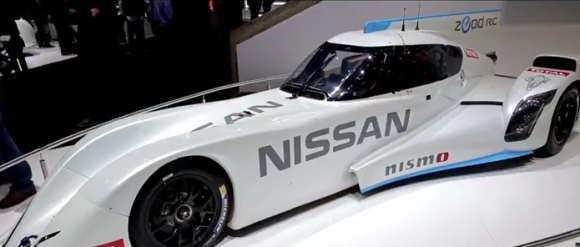
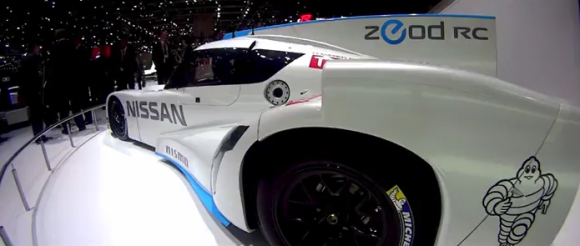

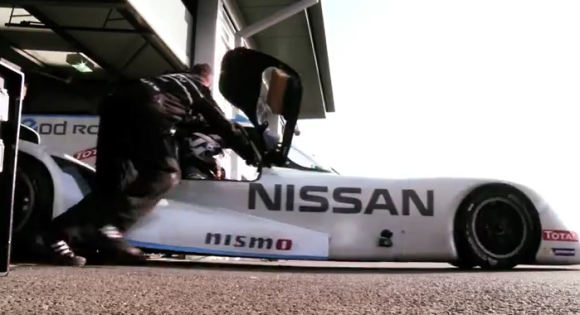
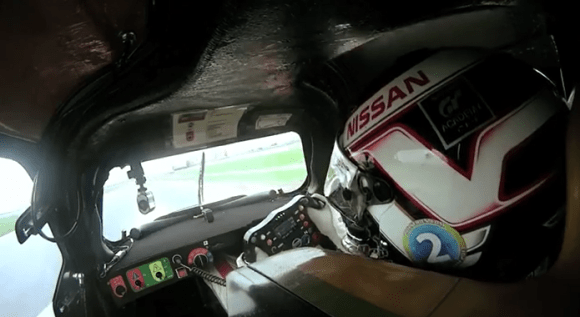
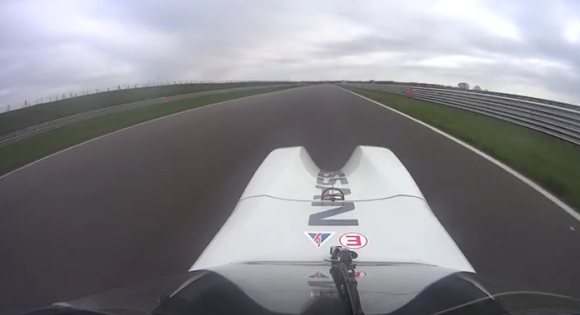
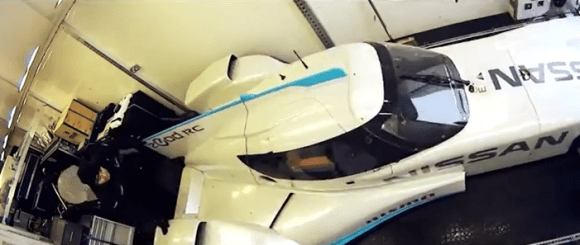
 You can drive this car with a PlayStation controller, meaning Gran Turismo is now real【Video】
You can drive this car with a PlayStation controller, meaning Gran Turismo is now real【Video】 Tokyo Motor Show 2013: Cars! Crowds! Comely models! 【Photos】
Tokyo Motor Show 2013: Cars! Crowds! Comely models! 【Photos】 A self-driving car that delivers ramen is Nissan’s newest automotive innovation【Video】
A self-driving car that delivers ramen is Nissan’s newest automotive innovation【Video】 Nissan ends production of GT-R, but did the legendary sports car have to end like this?
Nissan ends production of GT-R, but did the legendary sports car have to end like this? Popular racing game developer Genki begins countdown, fans’ expectations build
Popular racing game developer Genki begins countdown, fans’ expectations build 7-Eleven Japan’s ramen-cooking robot whipped us up a bowl of noodles【Taste test】
7-Eleven Japan’s ramen-cooking robot whipped us up a bowl of noodles【Taste test】 Japan may add Japanese language proficiency, lifestyle classes to permanent foreign resident requirements
Japan may add Japanese language proficiency, lifestyle classes to permanent foreign resident requirements Japanese men list seven traits that would make it impossible for them to date a woman
Japanese men list seven traits that would make it impossible for them to date a woman Kyoto samurai house wants to share its history of seppuku, torture and gold coins with visitors
Kyoto samurai house wants to share its history of seppuku, torture and gold coins with visitors Starbucks on a Shinkansen bullet train platform: 6 tips for using the automated store in Japan
Starbucks on a Shinkansen bullet train platform: 6 tips for using the automated store in Japan Japan has vending machines that put protective film on your phone for you — Here’s how to use them
Japan has vending machines that put protective film on your phone for you — Here’s how to use them Tiny travel guides are our latest Japanese gacha capsule toy obsession
Tiny travel guides are our latest Japanese gacha capsule toy obsession Dragon Quest Burgers and Slime drinks are coming to McDonald’s Japan【Video】
Dragon Quest Burgers and Slime drinks are coming to McDonald’s Japan【Video】 Is it rude to sing along at concerts in Japan? We ask a pro musician for his take
Is it rude to sing along at concerts in Japan? We ask a pro musician for his take Everything you need to know about climbing Japan’s second-highest volcano
Everything you need to know about climbing Japan’s second-highest volcano 7-Eleven Japan starts new temporary luggage storage service in over 300 branches
7-Eleven Japan starts new temporary luggage storage service in over 300 branches Disillusionment at Tsukiji’s tourist-target prices led us to a great ramen restaurant in Tokyo
Disillusionment at Tsukiji’s tourist-target prices led us to a great ramen restaurant in Tokyo Starbucks teams up with 166-year-old Kyoto doll maker for Year of the Horse decorations【Photos】
Starbucks teams up with 166-year-old Kyoto doll maker for Year of the Horse decorations【Photos】 Starbucks Japan releases new zodiac chilled cup drink for 2026
Starbucks Japan releases new zodiac chilled cup drink for 2026 Lacquerware supplier to emperor of Japan and Pokémon team up for new tableware
Lacquerware supplier to emperor of Japan and Pokémon team up for new tableware Tokyo’s Tsukiji sushi neighborhood asks tour groups to stay away for the rest of the month
Tokyo’s Tsukiji sushi neighborhood asks tour groups to stay away for the rest of the month Is this the most relaxing Starbucks in Japan?
Is this the most relaxing Starbucks in Japan? Street Fighter Hadouken Churros to be launched and eaten in Tokyo, Okami pudding on offer too
Street Fighter Hadouken Churros to be launched and eaten in Tokyo, Okami pudding on offer too Japan’s human washing machines will go on sale to general public, demos to be held in Tokyo
Japan’s human washing machines will go on sale to general public, demos to be held in Tokyo Japanese train company is letting fans buy its actual ticket gates for their homes
Japanese train company is letting fans buy its actual ticket gates for their homes Tokyo considering law requiring more trash cans following litter increase in heavily touristed area
Tokyo considering law requiring more trash cans following litter increase in heavily touristed area Nintendo’s Kirby now delivering orders at Kura Sushi restaurants, but not in Japan
Nintendo’s Kirby now delivering orders at Kura Sushi restaurants, but not in Japan Tokyo event lets you travel back in time, for free, to celebrate 100 years since Showa era start
Tokyo event lets you travel back in time, for free, to celebrate 100 years since Showa era start Sanrio theme park in Japan announces plans to expand into a Sanrio resort
Sanrio theme park in Japan announces plans to expand into a Sanrio resort Survey asks foreign tourists what bothered them in Japan, more than half gave same answer
Survey asks foreign tourists what bothered them in Japan, more than half gave same answer Japan’s deadliest food claims more victims, but why do people keep eating it for New Year’s?
Japan’s deadliest food claims more victims, but why do people keep eating it for New Year’s? We deeply regret going into this tunnel on our walk in the mountains of Japan
We deeply regret going into this tunnel on our walk in the mountains of Japan Studio Ghibli releases Kodama forest spirits from Princess Mononoke to light up your home
Studio Ghibli releases Kodama forest spirits from Princess Mononoke to light up your home Major Japanese hotel chain says reservations via overseas booking sites may not be valid
Major Japanese hotel chain says reservations via overseas booking sites may not be valid Put sesame oil in your coffee? Japanese maker says it’s the best way to start your day【Taste test】
Put sesame oil in your coffee? Japanese maker says it’s the best way to start your day【Taste test】 The top 10 annoying foreign tourist behaviors on trains, as chosen by Japanese people【Survey】
The top 10 annoying foreign tourist behaviors on trains, as chosen by Japanese people【Survey】 No more using real katana for tourism activities, Japan’s National Police Agency says
No more using real katana for tourism activities, Japan’s National Police Agency says Starbucks Japan reveals new sakura drinkware collection, inspired by evening cherry blossoms
Starbucks Japan reveals new sakura drinkware collection, inspired by evening cherry blossoms Nissan rolls closer to self-driving cars, but is the world ready?
Nissan rolls closer to self-driving cars, but is the world ready? Japanese gaming grandpa is tearing up virtual track at age 93【Videos】
Japanese gaming grandpa is tearing up virtual track at age 93【Videos】 Japanese cookie brand has a fun game for you to play while stuck at home: cookie racing!
Japanese cookie brand has a fun game for you to play while stuck at home: cookie racing! Motorsports, hot springs, huge ramen, and an amusement park: All reasons to visit Suzuka Circuit
Motorsports, hot springs, huge ramen, and an amusement park: All reasons to visit Suzuka Circuit Sega builds “world’s fastest gaming PC,” is giving it away for free (processor speed unknown)【Vid】
Sega builds “world’s fastest gaming PC,” is giving it away for free (processor speed unknown)【Vid】 Sony’s PlayStation turns 20 years old, we look back at how it all began and the games we loved
Sony’s PlayStation turns 20 years old, we look back at how it all began and the games we loved
Leave a Reply